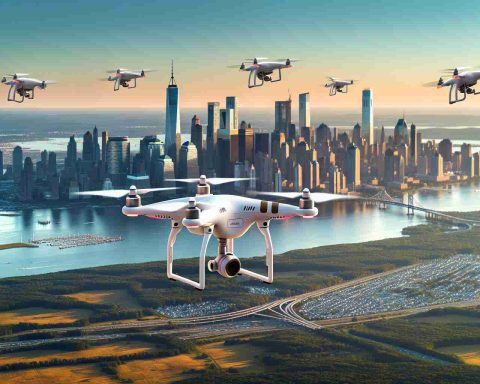Groundbreaking Collaboration and Scientific Advancements
The United Arab Emirates University is set to launch its inaugural satellite, named “Al Ain Sat-1,” through a partnership with SpaceX’s Falcon 9 rocket. This significant milestone underscores the UAE’s commitment to advancing national space initiatives and global collaboration in science.
During a press conference, university officials highlighted the satellite’s importance in aligning with the UAE leadership’s vision to embrace cutting-edge technologies and space exploration. The launch signifies the culmination of efforts from diverse institutions, showcasing a cooperative spirit in scientific innovation.
Al Ain Sat-1, designed as a compact 3U CubeSat, measures 30 cm in length and weighs approximately 3.7 kg, intended to operate in low Earth orbit. This project is spearheaded by the National Space Science and Technology Center, which plays an essential role in enhancing the UAE’s capabilities in the space sector and fostering an environment where academia and industry converge.
The initiative not only aims to develop satellite technology but also empowers students from various universities worldwide, promoting knowledge sharing and hands-on experience. As professors and directors express their enthusiasm, it is apparent that “Al Ain Sat-1” represents more than just a satellite; it embodies the spirit of international teamwork and innovation, inspiring future generations to explore the vast possibilities of space.
Broadening Horizons: The Societal and Environmental Implications of Space Initiatives
The launch of “Al Ain Sat-1” resonates beyond the confines of technological advancement; it illustrates a pivotal moment in global cooperation, culture, and the economy. As nations increasingly invest in space initiatives, the potential for enhanced international collaboration grows, fostering relationships that transcend borders. The UAE’s commitment to space exploration could inspire a surge of interest and investment in science and technology education, particularly among young people, highlighting the importance of STEM fields in economic development.
Moreover, the implications of satellite technology extend into vital sectors such as agriculture, disaster management, and urban planning. Equipped with advanced data collection capabilities, satellites can assist in monitoring climate change, tracking environmental degradation, and optimizing resource management. The environmental impact of such advancements could be transformative, allowing nations to respond more effectively to global challenges like food security and natural disasters.
Looking ahead, trends in space exploration suggest a growing emphasis on sustainable practices. The international space community is increasingly aware of the need to minimize debris in low Earth orbit, highlighting a collective responsibility toward maintaining a safe and navigable space environment. The long-term significance of initiatives like “Al Ain Sat-1” may well establish a framework for how countries approach collaborative science, emphasizing the intertwining of local objectives with global imperatives. Ultimately, this launch marks not merely a step for the UAE but a leap for collaborative science, with lasting implications for society and the planet.
UAE’s Space Frontier: Launching Al Ain Sat-1 and Embracing Future Innovations
Groundbreaking Collaboration and Scientific Advancements
The United Arab Emirates University (UAEU) is on the verge of a significant advancement in its national space initiatives with the upcoming launch of its first satellite, “Al Ain Sat-1.” This initiative, executed in partnership with SpaceX’s Falcon 9 rocket, illustrates the UAE’s strong commitment to embracing technological innovations and fostering collaboration in the field of space exploration.
Key Features and Specifications of Al Ain Sat-1
Al Ain Sat-1 is configured as a 3U CubeSat, featuring dimensions of 30 cm in length and a weight of around 3.7 kg. Designed to operate in low Earth orbit, this satellite serves multiple roles, including data collection and educational outreach. The compact nature of CubeSats allows for cost-effective and efficient space missions, making them ideal for universities and research institutions.
Collaborations, Use Cases, and Educational Impact
This ambitious project is spearheaded by the National Space Science and Technology Center, which aims to enhance the UAE’s capabilities in space technology while also nurturing a collaborative environment between academia and industry. The initiative provides invaluable opportunities for students from various universities worldwide, emphasizing hands-on experience and knowledge sharing. This focus on education seeks to inspire future generations to pursue careers in science and technology.
Pros and Cons of the Al Ain Sat-1 Project
Pros:
– International Collaboration: The partnership with SpaceX highlights the importance of global teamwork in advancing space technology.
– Educational Opportunities: Involvement of students enhances learning experiences and encourages interest in STEM fields.
– Technological Advancement: The project contributes to the UAE’s growing capabilities in the space sector.
Cons:
– Dependence on External Partners: Relying on SpaceX for the launch raises concerns about outsourcing critical aspects of space missions.
– Financial constraints: Maintaining and developing satellite infrastructure may require significant investment over time.
Pricing and Budget Insights
While the specific financial details of the Al Ain Sat-1 launch have not been disclosed, satellite projects typically involve substantial costs, including manufacturing, testing, and launch expenses. For instance, CubeSats can range from a few hundred thousand to several million dollars, depending on their complexity and capabilities. The UAE’s commitment to this kind of investment signifies its expectation of significant returns in terms of technological skills, research opportunities, and international collaboration.
Future Trends and Predictions
The launch of Al Ain Sat-1 is indicative of the broader trends in the space sector, particularly the increasing engagement of educational institutions in national space programs. Experts predict that similar initiatives will proliferate as universities around the globe look to enhance their research capabilities and involve students in real-world applications. As nations continue to explore and innovate, partnerships like that between UAEU and SpaceX may pave the way for a new era of educational and scientific collaboration.
Innovations in Satellite Technology
Al Ain Sat-1 will not only serve as a beacon of hope for aspiring aerospace engineers and scientists but is also poised to leverage cutting-edge technologies such as miniaturization, improved sensors, and advanced data processing. These innovations make it easier than ever for small satellites to contribute valuable information regarding Earth observation, space environment monitoring, and more.
This collaborative project between UAEU and international partners stands as a testament to the UAE’s ambition in the cosmos and a stepping stone toward more comprehensive space exploration efforts in the future.
For further insights into space technology initiatives, visit UAE University for more information on their programs and advancements.




















